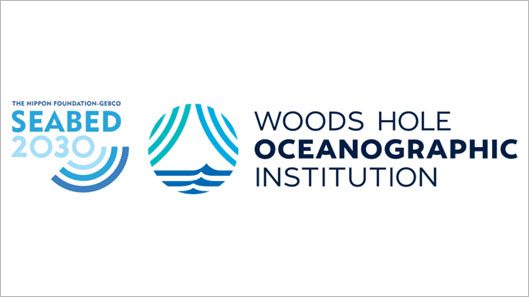
September 27, 2021
Woods Hole, Mass. — The Nippon Foundation-GEBCO Seabed 2030 Project and Woods Hole Oceanographic Institution (WHOI) have signed a Memorandum of Understanding in recognition of both organisations’ work to advance our understanding of ocean bathymetry. This will complement the goals of the United Nations Decade of Ocean Science for Sustainable Development.
Seabed 2030 is a collaborative project between The Nippon Foundation and GEBCO to inspire the complete mapping of the world's oceans by 2030, and to compile all bathymetric data into the freely available GEBCO Ocean Map. GEBCO is a joint project of the International Hydrographic Organization (IHO) and the Intergovernmental Oceanographic Commission (IOC), and is the only organisation with a mandate to map the entire ocean floor.
Woods Hole Oceanographic Institution is a private, non-profit institution dedicated to advancing knowledge of the ocean and its connection with the Earth system through a sustained commitment to excellence in science, engineering, and education, and to the application of this knowledge to problems facing society. The ocean is a defining feature of the planet and crucial to life on Earth, yet it remains one of the planet’s last unexplored frontiers.
WHOI scientists and engineers are committed to understanding all facets of the ocean as well as its complex connections with Earth’s atmosphere, land, ice, seafloor, and life—including humanity. This is essential not only to advance knowledge about the planet, but also to ensure society’s long-term welfare and to help guide human stewardship of the environment. WHOI researchers are also dedicated to training future generations of ocean science leaders, to providing unbiased information that informs public policy and decision-making, and to expanding public awareness about the importance of the global ocean and its resources.
“It is invaluable to count upon Woods Hole Oceanographic Institution’s support in our quest for bathymetric data” said Jamie McMichael-Phillips, Director of the Seabed 2030 Project.
“WHOI’s commitment to researching and understanding the ocean matches Seabed 2030’s sustainability goals, and we are confident that our collaborative work will bring us closer to achieving our aims and ultimately allow for a fairer, more sustainable world.”
Commenting on the new agreement, Kilaparti Ramakrishna, Chair of the newly-formed Seabed 2030 Strategic Advisory Group, said, “It is highly promising to witness top international organizations such as WHOI and Seabed 2030 combining resources and working together to step up the pace of research in the name of sustainability. I look forward to seeing the results of this collaboration.”
Peter B. de Menocal, WHOI President and Director said, “Despite its size and impact on the entire planet, 80 percent of the global ocean hasn’t been mapped or explored. WHOI Is uniquely qualified to provide expertise in exploration of the ocean floor, which is crucial for understanding our global climate puzzle.”
All data collected and shared with the Seabed 2030 Project is included in the GEBCO global grid, which is free and publicly available.
###
Woods Hole Oceanographic Institution (WHOI) is a private, non-profit organization on Cape Cod, Massachusetts, dedicated to marine research, engineering, and higher education. Established in 1930, its primary mission is to understand the ocean and its interaction with the Earth as a whole, and to communicate an understanding of the ocean’s role in the changing global environment. WHOI’s pioneering discoveries stem from an ideal combination of science and engineering—one that has made it one of the most trusted and technically advanced leaders in basic and applied ocean research and exploration anywhere. WHOI is known for its multidisciplinary approach, superior ship operations, and unparalleled deep-sea robotics capabilities. We play a leading role in ocean observation and operate the most extensive suite of data-gathering platforms in the world. Top scientists, engineers, and students collaborate on more than 800 concurrent projects worldwide—both above and below the waves—pushing the boundaries of knowledge and possibility. For more information, please visit www.whoi.edu
The Nippon Foundation-GEBCO Seabed 2030 Project is a collaborative project between The Nippon Foundation and GEBCO. The Seabed 2030 Project, launched at the United Nations Ocean Conference in 2017 by Chairman Sasakawa of The Nippon Foundation, coordinates and oversees the sourcing and compilation of bathymetric data from different parts of the world’s ocean through its five centres into the freely-available GEBCO Grid. Four Regional Centres cover the Southern Ocean, the Arctic and North Pacific Ocean, the Atlantic and Indian Oceans, and the South and West Pacific Ocean. These feed data products into the Global Data Centre.
Find out more about the project and how to get involved







修改评论